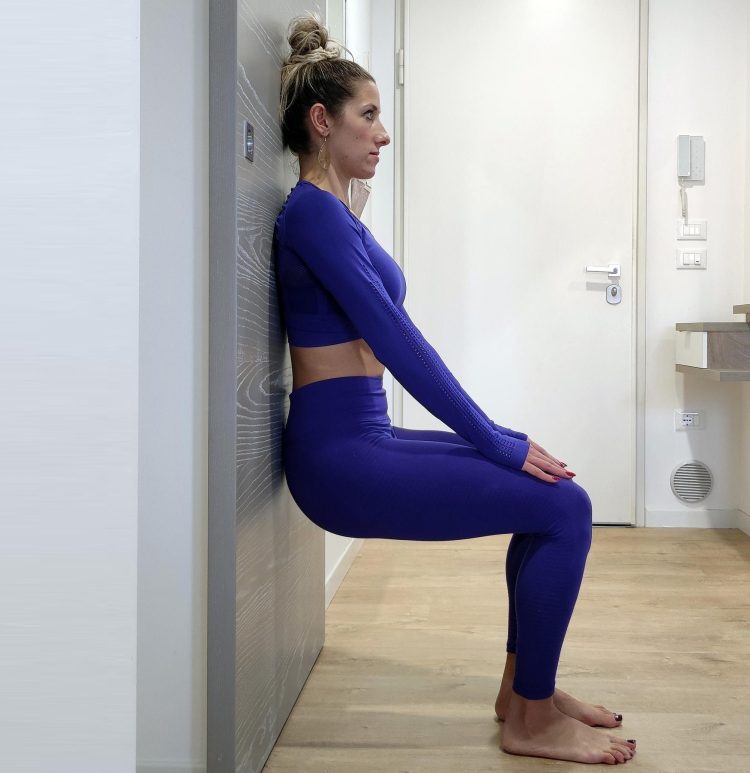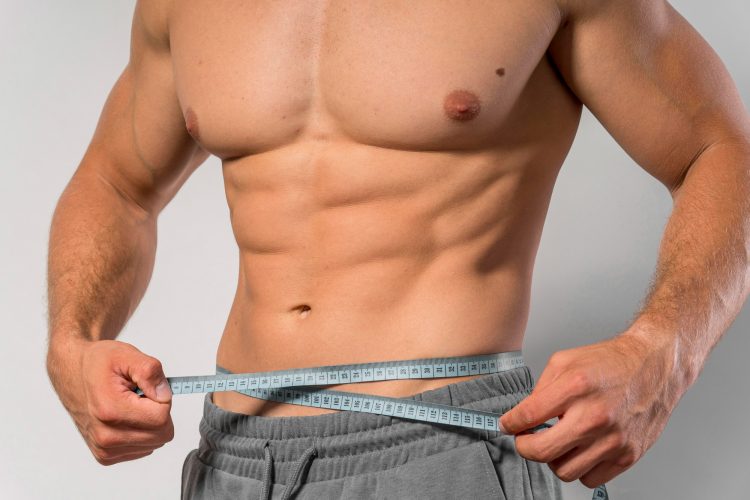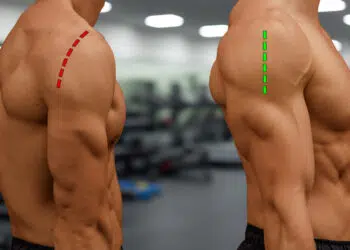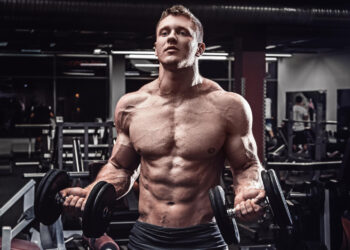As someone who’s been dealing with a nagging hamstring injury for over a month, I wanted to see if workouts like wall Pilates would help me. I’ve seen Wall Pilates all over my Instagram feed over the past few months, so I decided to try it.
Admittedly, I was initially hesitant to embrace it. While I recognize the benefits of Pilates and similar training methods, I’ve always gravitated towards sports, weightlifting, and plyometrics.
However, I was pleasantly surprised with how I felt after only three weeks of training. So, here’s how my journey went.
What Is Wall Pilates and Why I Did It?
Wall Pilates isn’t an innovative twist on traditional Pilates or the “next big thing.” Wall pilates is an alternative approach where you utilize the wall for assistance or resistance. It is a low-impact training approach that can improve overall strength and stability. (1)
Unlike conventional Pilates, which requires specialized equipment, such as a Pilates reformer, wall Pilates only requires a yoga mat, so you don’t have to lie on the floor. Its entire point is to utilize the wall to challenge and engage different muscle groups, most notably your quads, hamstrings, and abdominals.
Level Up Your Fitness: Join our 💪 strong community in Fitness Volt Newsletter. Get daily inspiration, expert-backed workouts, nutrition tips, the latest in strength sports, and the support you need to reach your goals. Subscribe for free!
As I said earlier, I’ve been dealing with a minor but persistent injury I picked up several months ago while playing tennis, so trying out wall Pilates seemed like a good idea. I also remembered that several trainers utilized movements similar to wall Pilates (glute bridges, for instance) at the Ferrero Tennis Academy as part of their regular training program. So, it was worth a shot.
Does It Work? — My Impressions and Observations
After starting Wall Pilates, I noticed one thing immediately — it’s not as easy as it looks. I’m guilty of neglecting core training, and these seemingly simple exercises have made that painfully obvious.
Overall, wall Pilates has its ups and downs, but yes, it does work and can be worth your while. Utilizing the wall does provide a constant point of contact and helps maintain stability, but that’s not all there is to it. Depending on how you approach each exercise, you can use the wall to add resistance to your training and make it more challenging.
For instance, you can make an exercise like wall marches much more challenging by trying to push through the wall and focus on slow and steady movements.
Wall Pilates can also be a great starting point if you’re out of shape and new to training. It’ll help you familiarize yourself with some common exercises and give you a good workout. There’s even a good chance you’ll be sore after the initial training sessions.
The main issue is that wall Pilates simply isn’t challenging enough for those in shape. It can supplement an existing fitness routine, but I’m afraid it would be quite ineffective on its own.
My Wall Pilates Routine
I’ve added 30 minutes of wall Pilates to my morning exercise routine for the past three weeks. Doing wall Pilates first thing in the morning helped me warm up my body for the rest of my daily activities, whether that’s sports or weight training in the afternoon. I focused on lower-body exercises as that’s the area I wanted to work on, so here’s the routine I settled on after a few experimental sessions:
- Wall-Assisted Bridges
- Wall Marching Bridge
- Standing Side Leg Raise
- Wall Sits
- Wall Squats
Wall-Assisted Bridges
This exercise strengthens the glutes, quads, hamstrings, and lower back. It also helps improve pelvic stability. I was starting my sessions with this exercise because it helped warm up my hamstrings in the most comfortable way.
How to:
- Lie on your back with your feet flat against the wall and knees bent at a 100–110-degree angle.
- Press your feet into the wall (keep your heels planted) and lift your hips until your body forms a straight line from knees to shoulders.
- Hold for a few seconds at the top, and then slowly lower your hips to the starting position.
- Repeat this movement for 2-3 minutes.
Pro Tip: When assuming the starting position, ensure your knees aren’t bent at a 90-degree angle. If you keep them at a 90-degree angle, you’ll have a hard time keeping your heels planted.
Chloe de Winter, a physiotherapist turned Pilates trainer, has a few tips on how to protect your lower back while performing bridges:
“Make sure you ground through the heels when you do your bridge. It’s gonna help you activate through the back of your legs and take the load off your lower back. Then, really think about the scoop of the tailbone under rather than letting your low back arch down towards the mat.”
She also said:
“Make sure you’re not lifting up too high. It’s not wrong to do it this way, but it puts much less load on your lower back if you keep the range small.”
Wall Marching Bridge
The marching bridge is a variation of the previous exercise but focuses more on stability and coordination. It is also much harder on your core, glutes, and hamstrings, which is precisely why I did it.
How to:
- Start in the same position as the wall-assisted bridges, and lift your hips to form a straight line.
- Slowly lift one foot off the wall and pull the knee towards your chest. You’ll feel a big stretch in your hamstrings and quads.
- Return the foot to the wall and repeat the movement with the other leg.
- Descend to the starting position, and then repeat the entire movement.
Pro Tip: Keep your toes pointed while pulling the knee towards your chest. This will help you get a nice stretch in your calves.
Standing Side Leg Raise
The lateral leg raise focuses on the lower body, particularly the hip flexors and some glutes. It is a pretty standard exercise you’ll often see performed with cables in a gym. I decided on this movement for my hip flexor training because the lying clam wasn’t feeling particularly smooth for me.
Level Up Your Fitness: Join our 💪 strong community in Fitness Volt Newsletter. Get daily inspiration, expert-backed workouts, nutrition tips, the latest in strength sports, and the support you need to reach your goals. Subscribe for free!
How to:
- Stand sideways to the wall. You can keep your hand on the wall for added balance.
- Keep your body straight and lift your leg (the one away from the wall) outward. Lift as high as possible without compromising form (tilting your hips or moving the leg front or back).
- Hold at the top for a few seconds, then slowly come down.
- Repeat the movement for 1-2 minutes and then switch sides.
Pro Tip: You can make the exercise more challenging by adding ankle weights or resistance bands.
Wall Squats
Like regular squats, wall squats target your entire lower body — quads, hamstrings, glutes, and even calves. Unlike regular squats, wall squats allow you to forget about stability and focus on the squatting movement and the muscles you’re training.
How to:
- Stand with your back against a wall, feet shoulder-width apart and about two feet away from the wall.
- Slide down into a squat until your knees are bent at a 90-degree angle. Keep your back glued to the wall at all times.
- Hold at the bottom for a few seconds and then slide back up.
- Repeat for the recommended time.
Pro Tip: As you slide down, lift your arms straight up until they are parallel to the ground. Then, lower your hands and touch the wall once you’re all the way up.
Wall Sits
Wall sits are a deceptively complex exercise that will leave your quads, glutes, and hamstring burning. They were a part of my leg routine even before I dabbled with wall Pilates. And as is generally the case with isometric holds in my programming, I’ve kept this one for the end of the session.
How to:
- Stand with your back against the wall and walk your feet out while sliding down into a seated position.
- Keep your feet hip-width apart and your knees bent at 90 degrees.
- Press your back flat against the wall and hold the position for 20–30 seconds, or however long you can.
- Slowly stand up and take a short break before repeating 2–3 times.
Pro Tip: You can place books or filled water bottles on your lap to make the exercise harder as you become stronger.
Benefits of Wall Pilates
All forms of exercise can benefit your overall health and vigor; wall Pilates is no exception. Here are the advantages you can expect after several weeks of wall Pilates:
It May Improve Posture
It is incredibly hard to improve your posture through exercise (unless it’s corrective physical therapy), but wall Pilates can help strengthen your pelvic stability, core strength, and spinal erectors, which could slightly improve how you sit or stand.
A common belief is that wall Pilates helps improve posture because you keep your back straight while doing it. However, that’s not true. Staying upright while working out won’t affect your posture in the slightest.
Posture is primarily genetic, and whether you keep your shoulders and chest up has little to do with how strong your muscles are. (2)
That said, wall Pilates can strengthen your muscles and adjoining tissues, directly improving posture if caused by muscular imbalance or weaknesses.
Strengthens Your Core (And Legs)
One thing you’ll notice almost immediately is that wall Pilates helps strengthen your core. Most of the exercises have a plank-like element to them, so they greatly engage your abdominal muscles and spinal erectors.
This will result in a stronger, more stable core, leading to noticeable improvements in your daily life and sports performance. A strong core also minimizes the chance of lower back injuries, which is one of the most common issues in the modern world.
Your legs will also become stronger and more fatigue-resistant. Granted, I focused on the lower-body exercises during my wall Pilates journey, but the isometric holds do wonders for muscular endurance.
Helps With Weight Loss
While it isn’t primarily known for its calorie-burning potential (unlike some high-intensity forms of exercise), wall Pilates can contribute to weight loss and body composition changes over time. If you do wall Pilates 3–5 times per week, for 30–60 minutes, you will most certainly increase your daily caloric expenditure. On average, an hour of wall pilates can burn anywhere from 200–400 calories.
Granted, eating fewer calories will still be the main driving force behind weight loss, but if you supplement a caloric deficit with physical activity, you can expect better and faster results.
Better Coordination and Balance
Wall Pilates does help enhance your coordination and balance. I’ve felt this firsthand.
For instance, marching bridges require you to balance your body weight on one leg while performing slow and controlled movements for a few seconds. Unless you remain fully focused on the movement, you will lose balance. Your foot will move, your hips will sag, and your core will disengage.
On the other hand, if you remain in control at all times, your muscles (mostly slow-twitch muscle fibers) will work hard to keep your body stable, which will translate to everyday life.
For instance, walking on uneven surfaces during hikes will become much easier as your body is already accustomed to adjusting to shifts in balance. This ability to stabilize and adapt will eventually improve, enhancing your overall agility and reducing the likelihood of falls and injuries in various daily activities.
Wrapping Up
Having spent three weeks performing wall Pilates exercises, I can confidently say that almost everyone can benefit from incorporating it into their fitness routine. The effect wall Pilates has on your core is quite incredible. By activating all muscle tissues in your abdomen, this form of training will really do wonders for your stability and balance.
Also, you’re already performing most of these movements in some shape or form if you’re an active individual, so switching things up a bit can’t hurt.
However, the most significant advantage of wall Pilates, for me, was the low-impact nature of these movements. I firmly believe that if you’re working with a trainer or someone with good knowledge of human anatomy, wall Pilates can help you get back up to speed if you’re recovering from an injury.
References:
- Phrompaet S, Paungmali A, Pirunsan U, Sitilertpisan P. Effects of pilates training on lumbo-pelvic stability and flexibility. Asian J Sports Med. 2011 Mar;2(1):16-22. doi: 10.5812/asjsm.34822. PMID: 22375213; PMCID: PMC3289190.
- Bayartai ME, Ferreira PH, Pappas E, Pinheiro MB, Dambadarjaa B, Khuyagbaatar E, Sullivan J. Genetic and environmental effects on lumbar posture, flexibility and motion control in healthy adults. Musculoskelet Sci Pract. 2020 Dec;50:102253. doi: 10.1016/j.msksp.2020.102253. Epub 2020 Sep 4. PMID: 32920227.










